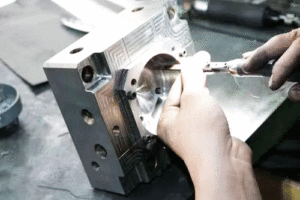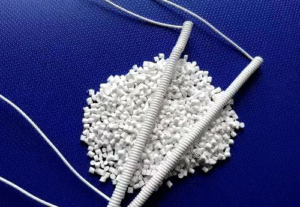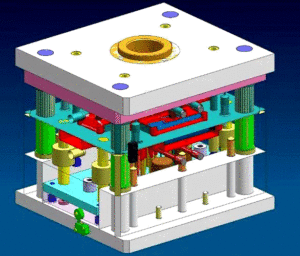
Polishing Treatment for Plastic Molds
Polishing Treatment for Plastic Molds With the widespread application of plastic products, such as daily-use items and beverage packaging containers, there is often a requirement
The ability of the plastic in the molten state after being heated to fill the entire cavity under pressure is called fluidity. And it is generally tested with a professional fluidity test mold.
The fluidity of plastics of the different grades of the same type is different. And plastic parts of different structures have different requirements for the fluidity of the plastic.The fluidity of the plastic is closely related to conditions like molding temperature and pressure.
Generally, if the fluidity is too large. On the one hand, the melt will not be filled tightly, causing the product to be loose and affecting the product quality. On the other hand, if the fluidity is too large, the injection molded parts are prone to flaking (burrs) sticking and nozzle flow, causing the nozzle to block. If the flow of plastic is too small, for plastic parts with complex structure and long process, it is difficult to flow during injection molding, which is prone to lack of glue and shrinkage, resulting in a large amount of waste. Or it must be injected under high pressure conditions, which will easily make the internal stress of the plastic parts too large. Therefore, we must choose the plastic molding with suitable fluidity according to the product structure, size, and thickness.
Thermoplastics contain more or less moisture and volatiles, and a proper amount of moisture has a plasticizing effect.
If the water and volatiles in the plastic exceed a certain proportion, many problems (such as degradation, fogging, strength reduction, etc.) will occur during injection molding. In severe cases, bubbles (silver streaks) and rough surfaces may occur. The destroyed transparency of transparent products (turbidity) and other undesirable phenomena are difficult to guarantee the accuracy of precision plastic parts.
However, absolutely dry plastic will cause a decrease in fluidity, an increase in brittleness. And it is difficult to fill the mold during molding. So it is also unusable.
(1) The average molecular weight of plastic resin is low.
(2) The plastic resin is not sufficiently dried during production.
(3) Plastics with high water absorption absorb moisture in the surrounding air due to improper storage.
(4) Different plastics have different drying temperature and drying time regulations.
The main reasons for shrinkage are the following three aspects:
A. Plastic has a much larger thermal shrinkage than metal (about ten times).
B. Plastic products are not rigid after hardening, and plastic parts have a certain elastic recovery after demolding.
C. When just demolding, the pressure begins to decrease. But the plastic part is still attached to the mold wall. And the product is plastically deformed.
The factors that affect the shrinkage rate are the nature of the plastic, the molding conditions, the design of the mold and the product. The shrinkage rate of amorphous plastics is less than 1%. While the shrinkage rate of crystalline plastics exceeds 1%. Products molded from crystalline plastics have post-shrinkage. The size needs to be measured after cooling for 24 hours, the accuracy can reach 0.02mm.
The processing temperature of plastics is the temperature that reaches the viscous fluid state. The processing temperature is not a point but a range (from the melting point to the decomposition temperature). When thermoforming plastics, we should select the appropriate processing temperature according to the size, complexity, thickness, insert condition, temperature tolerance of the colorant used, and machine performance.
Why is the temperature reflected by the thermometer often changeable in injection molding? And why the temperature set for the same product (same mold) may be different when it is produced on different machines?
In fact, the thermoforming temperature of plastics is relatively fixed, and it is only due to the method and point layout of temperature measurement and the performance difference of the temperature sensor that cause the above difference. The temperature displayed on the temperature indicator controller is not the actual temperature of the melt in the barrel but the indirect, local temperature.
Every injection molding worker needs to thoroughly understand the relevant properties of the plastic used when setting the injection molding process conditions. So that they can scientifically set the process conditions and analyze the problems that occur in the injection molding production process.

Polishing Treatment for Plastic Molds With the widespread application of plastic products, such as daily-use items and beverage packaging containers, there is often a requirement

Injection Molding Techniques for TPE and TPR Injection Molding Techniques for TPE and TPR 1. Dry the TPE and TPR material before injection molding It

Winter Maintenance Measures for Injection Molding Machines As winter approaches and temperatures gradually drop, a cold chill envelops the earth. While ensuring personal warmth, it

Assessment Regulations for Mold Trial Exceeding 3 Times Assessment Regulations for Mold Trial 1. Purpose The purpose of this regulation is to standardize the work of